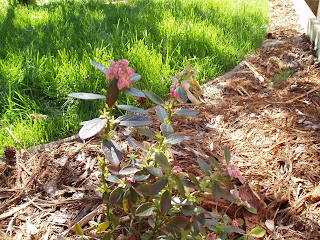Hi All, for long time I did not write and I just decided to start blog again. It’s freezing here in the Silicon Valley, in California and I wondered how I can protect the garden from the frost, quick search on the internet and a couple of advice from our local nursery:
Here are some techniques for effective frost protection. Don’t give up on plants that are damaged on top. Many times they can come back from the roots or whatever growth remains if protection is given after the first sign of damage.
1)
Water- It may seem counter-intuitive but the best frost protection is to water plants thoroughly before a cold snap. Well-watered plants are less likely to be frost damaged than dry ones. Moist soil also retains more heat than dry soil.
2)
Cover Plants - Frost protection fabrics offer 2° to 6°F cold protection. Unlike plastic sheeting or blankets, they CAN be draped directly over foliage and left on plants for up to 6 weeks. Look for Easy Gardener Plant and Seed Blanket (6’ X 20’) which can be cut to size for different sized plants. Fabrics should be draped all the way to the ground, or in the case of container protection.
3)
Lights - Place a lit 50 to 100 watt light bulb on the soil under any frost protection fabric (but not touching it) to keep the plant and roots warm. One attractive solution is to use miniature Christmas Tree Lights on plants leaving them lit all night. This adds some heat and has the added benefit of looking festive. Often these lights come on a net rather than a string, which makes them easier to install. Try nets on tender vines or a hedges. Lighting can be set on timers to run all night.
4)
Sprays – Antitranspirant sprays like Bonide Wilt Stop or Cloud Cover offer an additional 2° to 3°F cold protection. They also help keep plants from drying out in cold winds. Spray before covering with frost protection fabric for extra protection.
I hope that you all be able to keep your garden safe , health and avoid the frost!
Cheers,
Dee
For additional information, please go to:
http://biomet.ucdavis.edu/frostprotection/Principles%20of%20Frost%20Protection/FP005.htmlhttp://ag.arizona.edu/extension/pubs/garden/az1002.pdfhttp://www.yamagamisnursery.com/guides/frost-protection-guide.pdf








